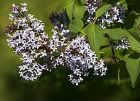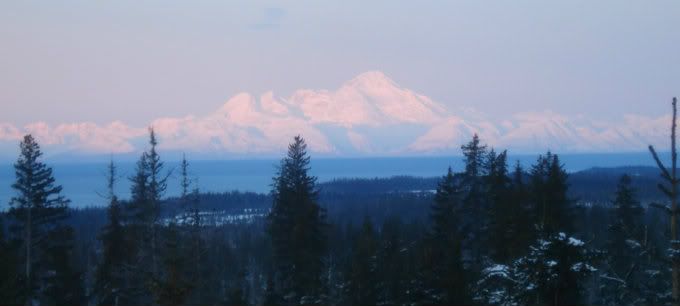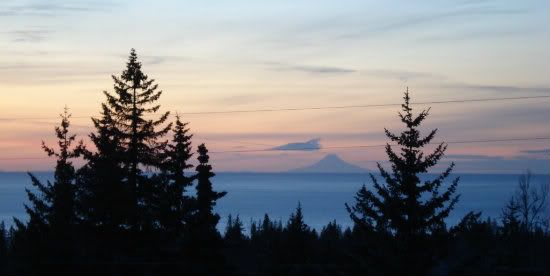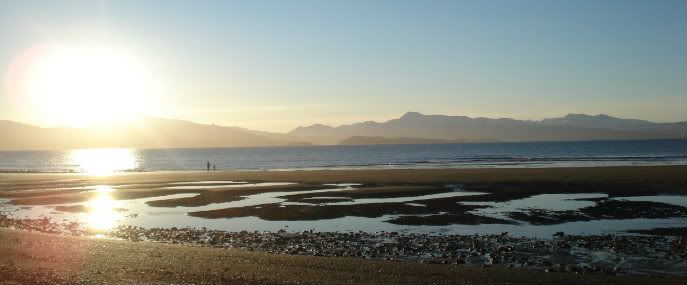Mobile, Alabama – The Azalea City
By Cynthia M. (clariail)
I guess that you could say that I am a Southerner and have the drawl to prove it. At least, according to what I have been told when traveling outside of the South. I was born in Arizona but we moved back to Alabama when I was six months old or so. The only other time when I have lived outside of Bama was when we lived in Conway Arkansas for a couple of years. We did move multiple times in Alabama until my parents settled on Mobile when I was in high school which would have been around 1971. That makes me feel so old! I love living in Mobile and don’t foresee ever moving away even if that means I have to put up with heat, humidity and mosquitoes. I’ll just keep the AC cranked up and the bug spray handy.
City of Mobile is located in Mobile County which is the second most populated county in the state. Mobile has a population of more than a quarter of a million people in the metropolitan area that covers 128 square miles. Even though Mobile offers the amenities and infrastructure of a major metropolitan area, it has retained its sense of community and friendliness. I don’t feel like that I live in a large city. I can get to major shopping areas, downtown, and great restaurants within 10-20 minutes. We are also close to great beaches such as Gulf Shores and Dauphin Island, about a 45 minute drive or so.
 Brief History:
Brief History:
Mobile began as the first capital of colonial French Louisiana in 1702. The city gained its name from the Native American Mobilian tribe that the French colonists found in the area of Mobile Bay During its first 100 years, Mobile was a colony for France, then Britain, and lastly Spain. Mobile first became a part of the United States of America in 1810, with the annexation of West Florida under President James Madison. It then left that union in 1861 when Alabama joined the Confederate States of America, which collapsed in 1865.
Attractions:
Absorb Mobile Bay’s unique history as you view artifacts detailing the city’s earliest beginnings to modern day heroes at innovative museums. Explore a mighty battleship (USS Alabama) from stem to stern or relive history aboard a World War II submarine. Enjoy nature at its finest and visit one of our unrivaled gardens. Blooming year round, these gardens are a part of our city everyone must see. Recapture the true spirit of Southern history on the veranda of an antebellum home. Check out the latest scientific discoveries through hands on exhibits or sit back and watch an IMAX movie. Greyhound races run nightly, so grab a bite to eat and cheer on the dogs. Any time of the year, on any day of the week, Mobile Bay is teeming with energy.
For the museum lovers out there, we have several to choose from as well as several art galleries. On the 2nd Friday of each month, there is the Loda Art Walk held in the downtown area where art galleries, institutions, studios and unique shops open their doors and welcome you inside to see beautiful artwork, sample delicous foods and hear the sounds of the LoDa Artwalk.
If you enjoy golf, we have twenty one world class golf courses that you can have your pick to play. My husband has tried several of them and enjoyed each one.
For those who enjoy baseball, we have the Mobile Bay Bears of the Double-A Southern League, a farm team of the Arizona Diamondbacks.
And of course for the Party Goers among you, we have Mardi Gras. Mobile is not only recognized as celebrating the first-known American Mardi Gras celebration in 1703 (yes, even before New Orleans), but also as home to the “America’s Family Mardi Gras” delighting both young and old from around town and across the nation. This magnificent celebration lasts for over two and a half weeks and culminates on Fat Tuesday, the day before Lent. For weeks, the streets of downtown Mobile are filled with the sights and sounds of live marching bands, brilliant-colored floats and of course teeming crowds of parade goers. The floats are glowing spectacles manned by masked riders festooned in satin and sequins, and armed with crowd-pleasing “throws” such as beads, moon pies, doubloons and candy.
Each year it expands a little bit more as more of the towns close to Mobile choose to have their own celebrations but they all occur during the couple of weeks that make up the Mardi Gras celebration. There is also the Mobile Carnival Museum where you may learn more about the history of Mardi Gras and see some of the beautiful outfits worn by the previous Kings and Queens that have presided over the celebration.

If you enjoy fresh seafood, we have plenty of places that you can find it both here in Mobile and in the neighboring cities and county. You can either choose from the great restaurants that we have or if you wish to prepare it yourself, there are plenty of shops to buy it fresh.
Weather:
Mobile’s geographical location on the Gulf of Mexico provides a mild subtropical climate, with hot, humid summers and mild, rainy winters. The record low temperature is −1 °F (−18 °C), set on February 13, 1899, and the record high is 105 °F (41 °C), set on August 29, 2000.
A 2007 study by WeatherBill, Inc. determined that Mobile is the wettest city in the contiguous 48 states, with 66.3 inches (1,680 mm) of average annual rainfall over a 30-year period. Mobile averages 120 days per year with at least 0.01 inches (0.3 mm) of rain. Snow is rare in Mobile, with the last snowfall being on February 12, 2010.
Mobile is occasionally affected by major tropical storms and hurricanes. Hurricane Frederick 1979, Hurricane Opal 1995, Hurricane Ivan 2004, and Hurricane Katrina in 2005.
Education:
Public schools in Mobile are operated by the Mobile County Public School System. The Mobile County Public School System has an enrollment of over 65,000 students, employs approximately 8,500 public school employees. The State of Alabama operates the Alabama School of Mathematics and Science on Dauphin Street in Mobile, which boards advanced Alabama high school students. It was founded in 1989 to identify, challenge, and educate future leaders.
Mobile also has a large number of private schools, most of them being parochial in nature.
Major colleges and universities in Mobile that are accredited by the Southern Association of Colleges and Schools include the University of South Alabama, Spring Hill College, the University of Mobile, Bishop State Community College, and Faulkner University.
I hope that you have enjoyed learning a little about my home town. I have loved sharing it with you and if you ever come this way, drop me a message as I would love to meet you.


From Fort to Port: An Architecural History of Mobile, Alabama by Elizabeth Barrett Gould

Keeping Hearth & Home in Old Alabama compiled and edited by Carol Padgett

Belle’s Letters: Contemporary Fiction by Alabama Women edited by Joe Taylor and Tina M. Jones

Gods in Alabama by Joshilyn Jackson

Baseball in Mobile by Joe Cuhaj, Tamra Carraway-Hinckle


 economy of the territory that became Idaho, there are still active mines there today. My hometown was settled because it was on the Montana Trail, a freight wagon route into these mining areas. A toll crossing was built over the Snake River there, specifically to get supplies from the rail lines in Utah into the copper rich area at Butte, Montana. In 1878 the Union Pacific RR built a feeder line into the mining areas through south eastern Idaho, a rail crossing was once again built in my hometown, opening the area to more settlers looking for a place to farm.
economy of the territory that became Idaho, there are still active mines there today. My hometown was settled because it was on the Montana Trail, a freight wagon route into these mining areas. A toll crossing was built over the Snake River there, specifically to get supplies from the rail lines in Utah into the copper rich area at Butte, Montana. In 1878 the Union Pacific RR built a feeder line into the mining areas through south eastern Idaho, a rail crossing was once again built in my hometown, opening the area to more settlers looking for a place to farm. became a state on July 3, 1890. It has over 3100 river miles, more than any other state. Mt. Borah, near Boise is the highest peak in Idaho at 12,662 feet. The Syringa is the state flower, the Mountain Bluebird is the state bird, the Western White Pine is the state tree, the state horse is the Appaloosa, the state fruit is the Wild Huckleberry, the state fish is the Cutthroat Trout, and the state gem is the Star Garnet. As of 2005 thepopulation of Idaho was 1,429,096. It seems that Boise State University has a fine football program.
became a state on July 3, 1890. It has over 3100 river miles, more than any other state. Mt. Borah, near Boise is the highest peak in Idaho at 12,662 feet. The Syringa is the state flower, the Mountain Bluebird is the state bird, the Western White Pine is the state tree, the state horse is the Appaloosa, the state fruit is the Wild Huckleberry, the state fish is the Cutthroat Trout, and the state gem is the Star Garnet. As of 2005 thepopulation of Idaho was 1,429,096. It seems that Boise State University has a fine football program. The volcanic past I spoke of earlier can be seen at the Craters of the Moon, National Monument and Preserve. It is a very unique place and must be seen to be believed, it can be seen from outer space, and NASA did some testing there before the Apollo Moon landings. It is an extinct volcanic landscape, but it would have looked very much like Yellowstone in the primordial past.
The volcanic past I spoke of earlier can be seen at the Craters of the Moon, National Monument and Preserve. It is a very unique place and must be seen to be believed, it can be seen from outer space, and NASA did some testing there before the Apollo Moon landings. It is an extinct volcanic landscape, but it would have looked very much like Yellowstone in the primordial past.


















 West Virginia is not a leading agricultural state because its rugged terrain and mountainous landscape have made farming difficult. The state relies on its rich mineral deposits and natural resources, oil, natural gas, timber, clay, limestone, salt and sand. Chemical production is West Virginia’s most important industry. Coal deposits can be found under about two-thirds of West Virginia’s land, making it one of the leading producers of soft coal in the country.
West Virginia is not a leading agricultural state because its rugged terrain and mountainous landscape have made farming difficult. The state relies on its rich mineral deposits and natural resources, oil, natural gas, timber, clay, limestone, salt and sand. Chemical production is West Virginia’s most important industry. Coal deposits can be found under about two-thirds of West Virginia’s land, making it one of the leading producers of soft coal in the country.





 was originally a Dutch colony and was later acquired by the British, making it one of the original 13 colonies. As with New York and Pennsylvania, the colony of New Jersey became a popular location for immigrants, making it a fairly ethnically and religiously diverse colony. During the Revolutionary War, New Jersey was the site of several battles and winter encampments, earning it the nickname “The Crossroads of the Revolution.” In fact, the commemorative state quarter for NJ showcases George Washington crossing the Delaware River to surprise the Hessian soldiers at the Battle of Trenton (though the image on the quarter, as well as the original painting, isn’t exactly accurate, but that’s a story for another time).
was originally a Dutch colony and was later acquired by the British, making it one of the original 13 colonies. As with New York and Pennsylvania, the colony of New Jersey became a popular location for immigrants, making it a fairly ethnically and religiously diverse colony. During the Revolutionary War, New Jersey was the site of several battles and winter encampments, earning it the nickname “The Crossroads of the Revolution.” In fact, the commemorative state quarter for NJ showcases George Washington crossing the Delaware River to surprise the Hessian soldiers at the Battle of Trenton (though the image on the quarter, as well as the original painting, isn’t exactly accurate, but that’s a story for another time). Menlo Park, NJ) and his entertainment contributions of the motion picture projector and the phonograph (and of course the light bulb which would make our form of entertainment, reading, a bit more challenging without it). In terms of professional sports, New Jersey has the Devils (hockey), the Nets (basketball, but I’ve heard that they might be moving to New York), and both the New York Giants and the New York Jets football teams actually play in New Jersey even though they are considered New York teams (personally I never really considered that fair, but that’s just me). We also have a number of minor league baseball teams as well. Besides sports, New Jersey is also home to other forms of entertainment. There have been a number of entertainers, past and present, who have been proud to call NJ home (in fact, some of them appear on the list at the end of this piece). How different the world would be without the impact of some of these great performers! New Jersey has also been the setting, filming location, or both for many TV shows and movies: The Sopranos, Ed, Jersey Shore, House, Cake Boss, and The Adventures of Pete & Pete are just a few shows that fall into those categories. Movies like Lean on Me, In & Out, Be Kind Rewind, Coneheads, and pretty much anything by Kevin Smith were all either about NJ, filmed scenes in NJ, or both. I’m sorry if the movie list consisted of films mostly about or filmed in northern NJ, but those are the ones I’m familiar with.
Menlo Park, NJ) and his entertainment contributions of the motion picture projector and the phonograph (and of course the light bulb which would make our form of entertainment, reading, a bit more challenging without it). In terms of professional sports, New Jersey has the Devils (hockey), the Nets (basketball, but I’ve heard that they might be moving to New York), and both the New York Giants and the New York Jets football teams actually play in New Jersey even though they are considered New York teams (personally I never really considered that fair, but that’s just me). We also have a number of minor league baseball teams as well. Besides sports, New Jersey is also home to other forms of entertainment. There have been a number of entertainers, past and present, who have been proud to call NJ home (in fact, some of them appear on the list at the end of this piece). How different the world would be without the impact of some of these great performers! New Jersey has also been the setting, filming location, or both for many TV shows and movies: The Sopranos, Ed, Jersey Shore, House, Cake Boss, and The Adventures of Pete & Pete are just a few shows that fall into those categories. Movies like Lean on Me, In & Out, Be Kind Rewind, Coneheads, and pretty much anything by Kevin Smith were all either about NJ, filmed scenes in NJ, or both. I’m sorry if the movie list consisted of films mostly about or filmed in northern NJ, but those are the ones I’m familiar with. rivalry between North NJ, South NJ, and the possible existence of Central NJ (some people argue that there is no Central NJ and that there is a clear dividing line between North and South, others see Central NJ as its own entity separate from North and South NJ). I never really thought much about it until college when I lived with roommates from other parts of the state. Apparently we all had a different dividing line depending on where we lived, and we also had different words for certain terms depending on where we lived. The two biggest examples are the night before Halloween (Goosey Night, Mischief Night, and Cabbage Night seemed to be the top ones, though I never knew it as anything other than Goosey Night. Our international roommate always found this argument hysterical because she never called the night before Halloween anything at all). Also for a very long sandwich the terms “sub,” “hoagie,” and “hero” were deemed equally acceptable depending on which part of the state you were from (as someone from north NJ I went to elementary school where we had “hoagie days” then moved a few towns over and suddenly they were “subs” so that might not even be a “North vs South” thing). For such a small state it is certainly strange that New Jersey has a number of different terms for the same thing!
rivalry between North NJ, South NJ, and the possible existence of Central NJ (some people argue that there is no Central NJ and that there is a clear dividing line between North and South, others see Central NJ as its own entity separate from North and South NJ). I never really thought much about it until college when I lived with roommates from other parts of the state. Apparently we all had a different dividing line depending on where we lived, and we also had different words for certain terms depending on where we lived. The two biggest examples are the night before Halloween (Goosey Night, Mischief Night, and Cabbage Night seemed to be the top ones, though I never knew it as anything other than Goosey Night. Our international roommate always found this argument hysterical because she never called the night before Halloween anything at all). Also for a very long sandwich the terms “sub,” “hoagie,” and “hero” were deemed equally acceptable depending on which part of the state you were from (as someone from north NJ I went to elementary school where we had “hoagie days” then moved a few towns over and suddenly they were “subs” so that might not even be a “North vs South” thing). For such a small state it is certainly strange that New Jersey has a number of different terms for the same thing! And that’s what New Jersey is to me, a wonderfully strange yet cozy and comforting nook in the world. I don’t pretend to be a traditional “Jersey Girl,” whatever that really is, but I am certainly proud of my home state. It’s hard for me to imagine living anywhere else. I’m sure I’m forgetting some other tidbits that should have been noted, but I did my best, and I hope you liked hearing about my corner of the universe, and feel free to check out some of the books below (I hope the links worked this time, it was giving me some difficulties so be warned):
And that’s what New Jersey is to me, a wonderfully strange yet cozy and comforting nook in the world. I don’t pretend to be a traditional “Jersey Girl,” whatever that really is, but I am certainly proud of my home state. It’s hard for me to imagine living anywhere else. I’m sure I’m forgetting some other tidbits that should have been noted, but I did my best, and I hope you liked hearing about my corner of the universe, and feel free to check out some of the books below (I hope the links worked this time, it was giving me some difficulties so be warned):





 And we’re very proud of our dairy industry too. After all, great cheese
And we’re very proud of our dairy industry too. After all, great cheese  comes from happy cows, and happy cows are from California. But we don’t just do agriculture around here. You’ll find plenty of cities here too, including our state’s capitol in Sacramento. Even if most of the county thinks the capitol is Los Angeles or San Francisco.
comes from happy cows, and happy cows are from California. But we don’t just do agriculture around here. You’ll find plenty of cities here too, including our state’s capitol in Sacramento. Even if most of the county thinks the capitol is Los Angeles or San Francisco. Coloma – In January of 1848, James Marshall discovered gold here, starting the famous California Gold Rush. You’ll still find plenty of gold-themed activities around, including the chance to pan for your own gold.
Coloma – In January of 1848, James Marshall discovered gold here, starting the famous California Gold Rush. You’ll still find plenty of gold-themed activities around, including the chance to pan for your own gold.
















